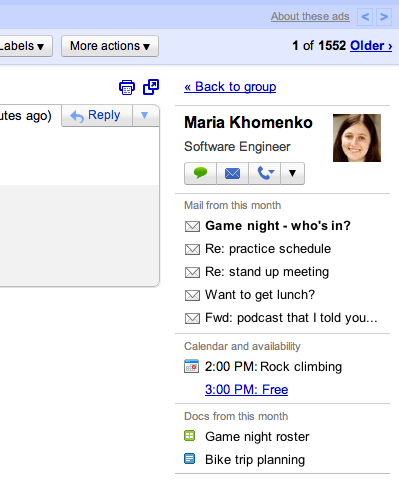Posted by Rajen Sheth, Group Product Manager, Chrome for Business
Today at Google I/O we unveiled the first Chromebooks. These mobile devices are a new kind of computer designed specifically for people who live in the browser. Chromebooks are made for people seeking uncompromising speed, simplicity and security, while providing features that will delight the IT department, too. For businesses and schools, we’re offering a subscription that includes the Chromebook, a web-based management console and 24/7 support from Google starting at $28 per month for businesses and $20 per month for schools.
1

The concurrent rise of cloud computing and powerful devices like smartphones and tablets is dramatically changing the way we work. But to date the innovation has stopped at the PC. We still worry about crashes, long boot times, software incompatibilities, endless program updates, outdated hardware, viruses, and all the other headaches associated with a personal computer. What’s more, managing a PC is expensive when you include setup, maintenance and security - not to mention the lost productivity when things break. According to Gartner Research, the total cost for a desktop computer is between about $3,300 and $5,800 per year and laptops can cost even more.
2

Chromebooks relieve these pains. They boot in 8 seconds, resume instantly and have WiFi and optional 3G so that users can always stay connected. Since Chromebooks update automatically, the software gets better over time, delivering the latest features as soon as they are released. Chromebooks are the first PCs designed with ongoing security threats in mind, which is critical for businesses. Chromebooks employ the principle of “defense in depth” to provide multiple layers of protection, including sandboxing, data encryption, and verified boot - to help keep your organization safe.
We also recognize that organizations want to centrally manage their Chromebooks, so we’re happy to announce we’re making this easy, with the ability to control accounts, applications and devices from a single web-based console. The new Chromebooks pricing model and simple, central maintenance means that Chromebooks are far more cost-effective than traditional PCs. Companies can save thousands of dollars per employee each year!
The browser is the platform
Chromebooks arrive as the browser is rapidly replacing the desktop as the platform for business applications. 85% of new software vendors will be focused on developing web-based apps by next year, and pretty much all software innovation takes place in the browser today.
3 Typically businesses would have to rewrite or repurchase applications when moving to another operating system – not with Chrome OS! Chromebooks work with your existing web apps, browser-based apps behind the firewall and we even have a solution for your desktop applications via our collaboration with Citrix. By navigating to an HTML5-based version of
Citrix Receiver, users can access virtualized applications such as Adobe® Photoshop® right from the browser.
We believe that a combination of web and virtualized apps will suit most business users today; in fact, a recent survey we commissioned found that two-thirds of companies could already switch the majority of their employees to an exclusively browser-based computing environment.
4
What we learned from the pilot program
Since December more than 50,000 organizations have applied to our
pilot program for testing Chromebooks. Participants ranged from the Intercontinental Hotels Group, Logitech® and MeadWestvaco to KIPP Academy and the City of Orlando. We heard from sales managers that the long battery life and integrated 3G helped them work more often from more places. Teachers told us that fast boot times and a reliable operating system meant more time to teach not troubleshoot. And IT administrators reported that Chromebooks were easier to manage and reduced security concerns, especially around viruses and the loss of sensitive data.
How to get your Chromebooks
Starting today, businesses and schools can contact Google regarding Chromebooks for Business and Education. This hardware and software as a service includes the Chromebooks themselves, a web-based management console to remotely manage users, applications and policies, full enterprise support, device warranties and replacements and regular hardware refreshes. Initially Chromebook subscriptions will be available in the US, UK, France, Germany, Netherlands, Italy and Spain, and we’ll be bringing them to other countries soon.
Learn more about Chromebooks for Business and how pilot customers are using them.
You can also join us for a live webinar on Chromebooks for Business and Education on Thursday, May 19, 2011 at 9 AM Pacific Time.
Register here.
1Plus applicable taxes and other fees, subject to change without prior notice.
2Gartner Research, 2010. "Desktop Total Cost of Ownership: 2011 Update”
3IDC, 2010. “Worldwide Software as a Service 2010–2014 Forecast: Software Will Never Be the Same.”
4Google-commissioned 2011 Hall & Partners online survey of over 400 IT decision makers.












